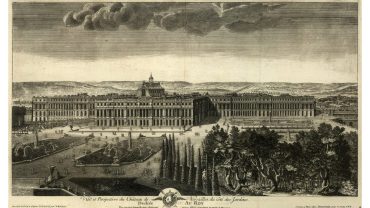He was a child prodigy who became one of the brightest minds of his day; an Italian theoretical physicist at the forefront of nuclear scientific discovery. Nobel laureates spoke his name in the same breath as those of Galileo and Newton. But he was also reclusive and troubled. And, on the night of 25 March 1938, Ettore Majorana boarded a ship, seemingly vanishing from the face of the earth.
Theories about his fate would swirl for decades, ranging from monastic seclusion and Nazi kidnapping to his taking his own life. But a new century brought new clues, and possibly even answers. So, what happened to Majorana, and could new discoveries finally solve this enigma? Read on as we explore the Majorana mystery.
Who was Ettore Majorana?

Catania in Sicily, the birthplace of Ettore Majorana (Credit: Jeremy Woodhouse via Getty Images)
Ettore Majorana was born in Catania, Sicily on 5 August 1906. The fourth of five siblings, he came from a wealthy family of scientists and politicians. Even from an early age, he showed himself to be gifted in mathematics, the shy child apparently retreating under tables to complete calculations far beyond his years.
A Promising Start

Majorana's genius was equated to that of Galileo (Credit: Berezko via Getty Images)
In 1923, Majorana enrolled in an engineering course at the University of Rome. Some speculate he did so to follow in the footsteps of his father, a prominent engineer who became General Inspector of the Italian Ministry of Communication. Some five years later however, he switched to physics. Soon, he was under the wing of future Nobel laureate Enrico Fermi, who recruited Majorana to the “Via Panisperna boys,” a groundbreaking group of young physicists named for the road of their institute. Even in such illustrious company, Majorana stood out, often solving complex problems in ways that astonished his peers and superiors alike. Fermi would later equate his genius to that of Galileo and Newton.
A Reclusive Genius

Majorana's work on subatomic particles was groundbreaking (Credit: japatino via Getty Images)
Majorana’s contributions to physics were profound. His work on quantum theory and his insights into the behaviour of subatomic particles earned him considerable recognition, and his ideas continue to be relevant in modern theoretical physics. In 1933, he travelled to what had become Nazi Germany and to Copenhagen, working with Nobel Laureates Werner Heisenberg and Niels Bohr.
However, Majorana saw his work as trivial, and was reluctant to claim credit. It was even said that he refused to publish his findings on the existence of the neutron, only for James Chadwick to do so later, earning a Nobel Prize for the discovery. This reticence became all the more acute upon his return from his travels. In fact, for several years he largely shut himself away, generally refusing to see even family and friends. In January 1938, he took on a position teaching quantum mechanics at the University of Naples and stayed in this role through the early part of the year until the one event that changed everything.
The Majorana Disappearance

In March 1938, Majorana boarded a ship in Naples (Credit: Nico De Pasquale Photography via Getty Images)
On March 25, 1938, Majorana boarded a ship from Naples to Palermo. Shortly before this trip, he sent a cryptic letter to his colleague, Antonio Carrelli, indicating that he had decided to withdraw from the public eye. He wrote, “I have made a decision that has become inevitable. There isn’t a bit of selfishness in it, but I realise what trouble my sudden disappearance will cause you.”
Majorana also sent a telegram to Carrelli slightly later than the letter, stating: “The sea has rejected me, and I will be back tomorrow.”
There’s some evidence suggesting he did indeed return to Naples, and was possibly seen by colleagues on this journey. Yet whether or not he returned to Naples, beyond this point he was never seen again. His family, colleagues, and the authorities launched an extensive search for the missing physicist, but no definitive trace of him was ever found.
Majorana Mystery: Theories

Was Ettore Majorana fleeing the impending atomic age? (Credit: FPG via Getty Images)
Majorana’s last confirmed sighting was that of him boarding the ship to Palermo, with some reports stating he had indeed returned to Naples. Over the following days and weeks, multiple investigations were launched, but nothing conclusive was discovered, and no body was ever found. So, what happened to Majorana? There were plenty of theories, including:
Fleeing the Atomic Age
One of the most prevalent theories was that Majorana foresaw the destructive potential of nuclear physics and chose to disappear in protest or self-preservation. Indeed, Fermi and others of his colleagues would go on to be part of the Manhattan Project developing a nuclear bomb, but there’s no evidence that Majorana ever expressed such fears.
Emigration to South America
Majorana sightings in Argentina and Venezuela were reported after his disappearance, fuelling speculation that he fled Italy, possibly to remove himself from the world of nuclear physics, and began a new life abroad.
Suicide
The melancholy tone in Majorana’s final letters led many to believe he took his own life. However, no body was discovered, and his family insisted that his Catholic faith made suicide unlikely, adding another layer of uncertainty to the question of what happened to Majorana.
Monastic Life
Some of Majorana’s family believed he may have suffered a spiritual crisis and retreated to a monastery, abandoning the pressures of scientific fame.
Kidnap or Murder
A darker theory proposes that Majorana was kidnapped or murdered, perhaps due to his knowledge of sensitive scientific information. Some pointed to the Nazis as possible perpetrators. However, no evidence of foul play was ever uncovered and a body was never found.
Majorana Disappearance: Case Closed

The small town of Valencia, Venezuela (Credit: Leonardo Marino via Getty Images)
There were numerous Majorana sightings after his disappearance, leading to significant interest in the fate of this famous physicist. And, in March 2011, the Rome Attorney’s Office reopened the case after a witness alleged he had not only seen but befriended Ettore Majorana. The witness even produced a photo purporting to show the scientist in Venezuela in 1955, although he now went by the name “Bini.”
Forensic analysis of the image deemed it likely that the pictured man was indeed Majorana, showing significant similarity of their facial features. This suspicion was potentially strengthened when a postcard written by Majorana’s uncle was reportedly found in “Bini’s” car. The case was officially closed in February 2015, stating that Majorana had likely lived in Valencia, Venezuela, under the surname Bini between 1955 and 1959.
What Happened to Majorana?

What happened to Ettore Majorana? (Credit: Nastco via Getty Images)
Despite the official conclusion, many questions linger. Why would a genius like Ettore Majorana abandon his life and career to live in obscurity? Could the Majorana mystery still hold secrets waiting to be uncovered? For those who doubt the South American theory, the question of what truly happened to Ettore Majorana remains unanswered, leaving his disappearance one of the most intriguing puzzles of the 20th century.












